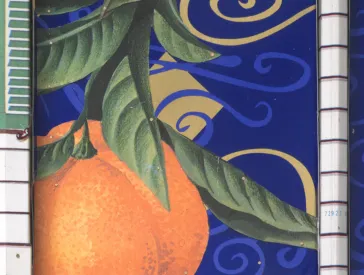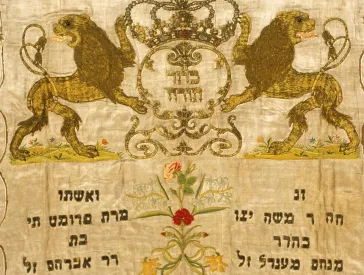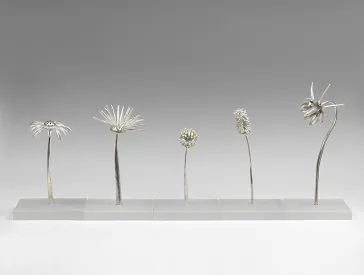A New Passover Custom and a Feminist Seder Plate
Object in Showcase
What is unusual about this plate designed by Harriete Estel Berman? It's not the combination of foods depicted in the individual recesses: a lamb shank, a hard-boiled egg, a paste made of fruit, a horseradish root, a leaf of romaine lettuce, and a large sprig of parsley. This may sound like a list of ingredients for a doomed cooking experiment, but in fact these are the symbolic foods (give or take regional variations) discussed at length at the ritual seder meal during the Jewish holiday of Passover.
Commemorating Liberation from Slavery in Egypt
Passover is a spring festival commemorating the liberation of the ancient Hebrews from slavery in Egypt. At the seder, each symbolic food has a designated place on the seder plate and becomes a focal point during the evening, inspiring lively discussion.
A New Ritual for the Seder
What is unusual is this contemporary seder plate's additional recess for an orange, marking a new custom which has found growing popularity in recent decades. The origin of the orange on the seder plate is unknown, but it seems that Susannah Heschel, a leading Jewish feminist scholar, was the first to pass a tangerine around her seder table. Its “seeds of prejudice” were spat out in solidarity with lesbians and gay men. The inclusion of this tasty citrus fruit expressed the rich contributions of homosexuals and women to Judaism, as well as their historical exclusion.
An Orange as a Symbol for Marginalized Groups
The custom took off especially in feminist circles, but minus the spitting and with an orange instead of a tangerine. As with all the symbolic Passover foods, the orange is open to personal interpretation, but it has generally come to represent those who have been marginalized in society in the past and the continuing struggle today for recognition.
| Title | Seder Plate |
|---|---|
| Artist | Harriete Estel Berman (born 1952) |
| Collection | Judaica |
| Location and year of origin | San Mateo, California, USA 2003 |
| Medium | Painted tin, aluminum, Plexiglas, gold, silver, brass |
| Dimensions | 5,3 x 27,9 x 59,7 cm |
Harriete Estel Berman, Seder Plate; Jewish Museum Berlin, photo: Jens Ziehe
Selected Objects: Jewish Object: Judaica Collection (9)










